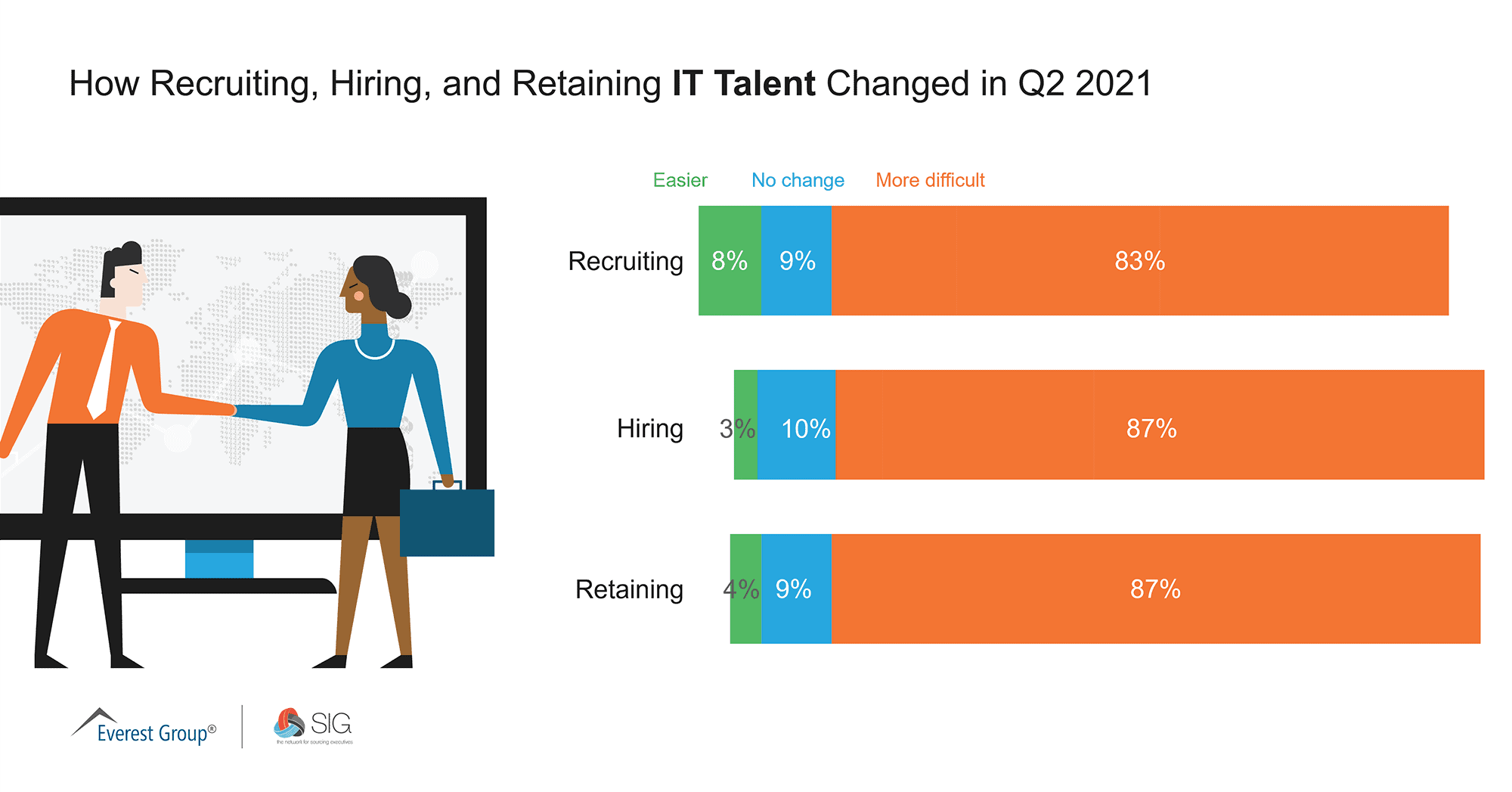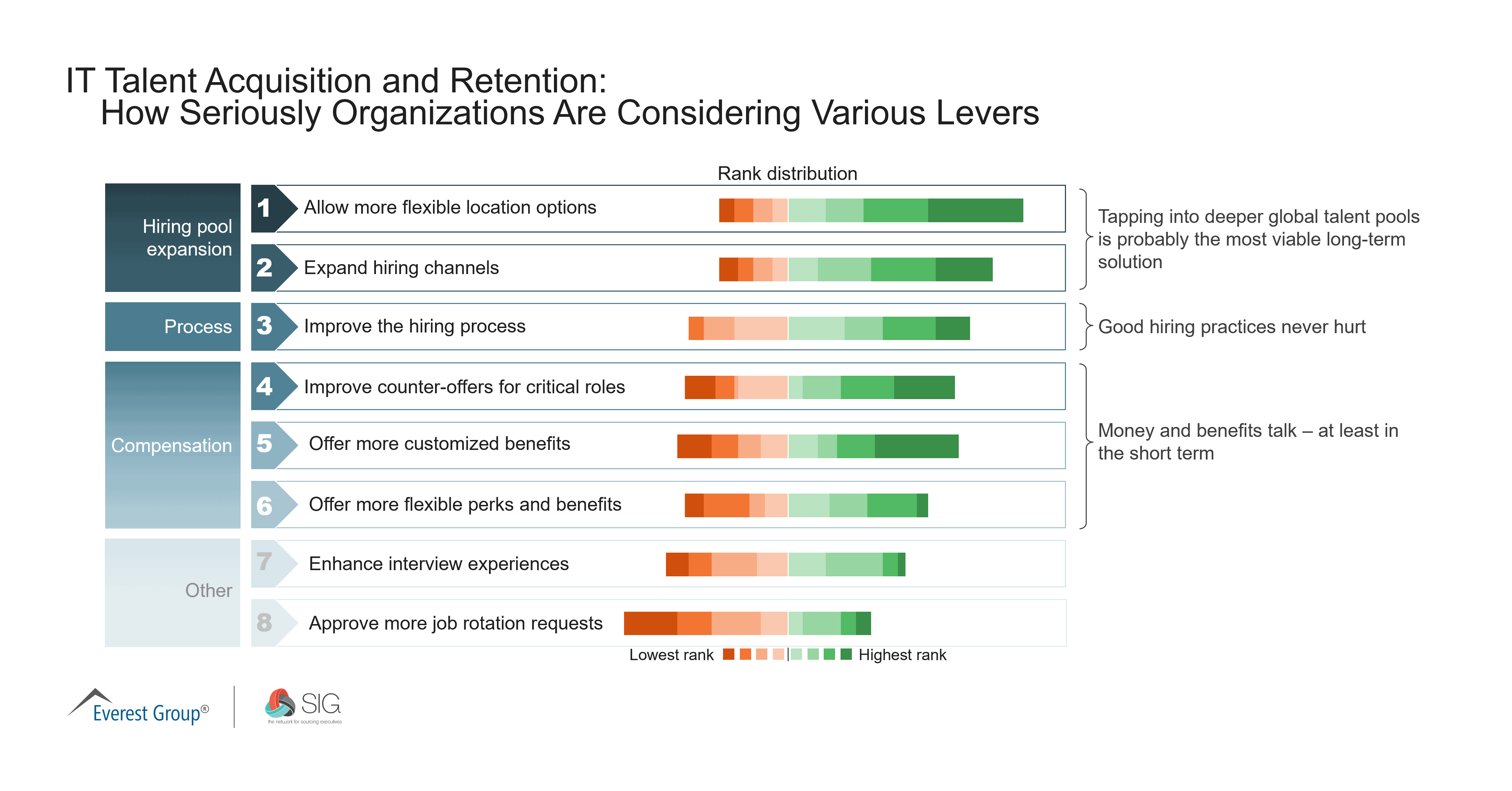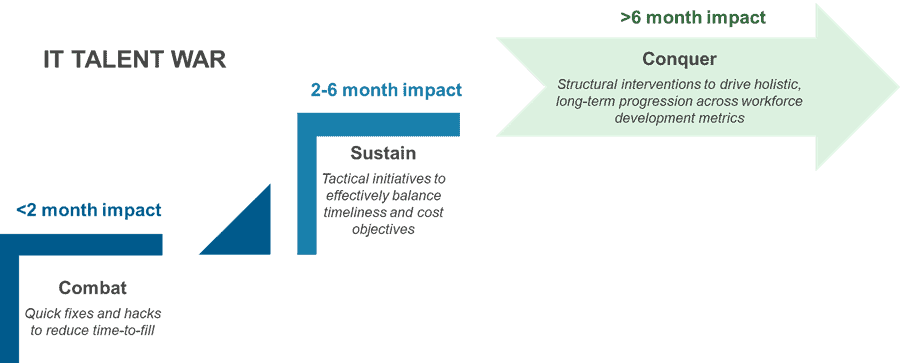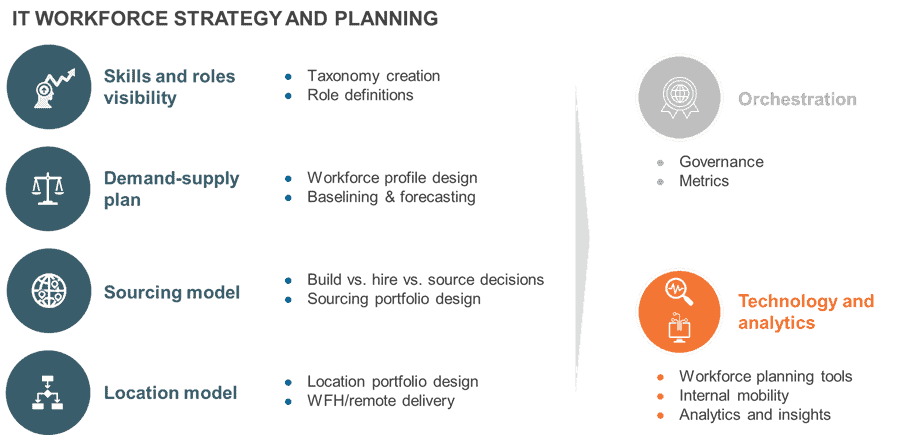
With the cost to secure IT talent internally and through third-party providers only continuing to rise, attracting and retaining technology workforce will require immediate and long-term tactics. Participate in our study to identify best-in-class IT workforce development strategies in leading global organizations.

The cost of hiring top-tier IT talent is escalating by the day. The persistent skills shortage has been exasperated by increasing post-COVID digital transformation spend and pent-up business demand, creating an intense short-term talent scramble.
Despite enterprises using known offensive (attraction) and defensive (retention) tricks, a demand-supply gap of 15%+ for critical roles in cloud, data, automation, agile, and security is being seen across regions. Offering compensation corrections and counters, bonuses, flexible location options, or job rotations are keeping companies in the race, but more ingenious measures are needed.

Insights to win the short-term battle
Enterprises are realizing that classical attraction and retention strategies are being relegated to “common differentiators.” Many enterprises are starting to max out on the stretched end of their annual IT workforce budgets – even as attrition levels spike beyond 30 percent for key roles.
We see this scramble persisting over the next 3-6 months. However, as pointed out by our CEO Peter Bendor-Samuel recently, fulfillment of pent-up demand and potentially increased cross-border talent movement is expected to start narrowing the demand-supply gap from the current dizzying levels as we enter 2022.

Here are a few novel approaches enterprises can take to alleviate workforce challenges to a certain extent, especially around access and time-to-hire:
- Relax shortlisting criteria: Recalibrate technical competency thresholds (e.g., the stringency of HackerRack test ratings and additional technical rounds), within reasonable limits, to broaden the talent funnel in the short term. Consider increased training at the start and onboarding graduates with dedicated training investments
- Involve business and operations: Follow the lead of best-in-class enterprises by having:
- IT engineers, product managers, and agile coaches – actively recruit and scout in online communities
- Senior IT and business leaders – elevate brand value and excite prospective candidates via informal discussions
- IT teams – screen candidates to cut down shortlisting efforts, especially for critical/complex roles
- Team members – approach candidates before the on-boarding to build rapport
- Upskill rapidly: Stagger skilling and training for new employees joining the organization and existing employees switching roles to reduce deployment time (e.g., from 8-9 weeks to 4 weeks)
- Focus on internal mobility: Re-evaluate internal career progression designs and create better growth opportunities for employees by properly mapping competencies, clearly articulating alternative roles/paths, and incentivizing critical skills development
- Explore alternative channels: Expand staffing partnerships, leverage hackathons/online competitions, proactively reach out to developer communities (Hacker News, Github, Stack Overflow, and Reddit), and engage with boot camps to improve channel access
- Hire location-neutral: Hire talent remotely with no requirement of the work location to tap into the broad IT pools and push decisions on Work from Home (WFH) or visas for later. Consider pods, satellites, and Centers of Excellence (CoEs) to access niche skills
- Increase referral premiums: Jack up referral premiums by 50 to 100 percent, especially for critical positions
- Award retention bonuses: Offer retention bonuses with a time lag of only a few months to counter immediate attrition
Staying ahead in the long-term talent race
With IT at the front and center of every business, enterprises across industries are inevitably competing for the same target talent pool. With demand expected to outstrip supply, only enterprises that take their tech workforce destinies into their own hands will survive. And the planning and structural interventions required to drive IT talent self-sufficiency need to begin today, if not already.

If you are interested in learning how other organizations are addressing the IT talent shortage, Everest Group is currently conducting an extensive study to identify best-in-class, or Pinnacle, IT workforce development strategies in leading global organizations. Take the survey
We will share a complimentary summary analysis of the survey results highlighting how your organization compares against the peer group with respect to capabilities created and business outcomes achieved.
Please reach out to [email protected], [email protected], and [email protected] to discuss this critical topic.
Also watch Peter Bendor-Samuel’s two-part video series about the ongoing talent war.










